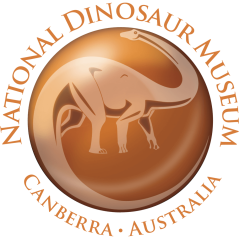Meet Oviraptor, From Egg Thief to a Devoted Parent.


The Oviraptor was a small dinosaur that lived during the Late Cretaceous period. It was a theropod, which means it walked on two legs and fossil evidence shows that they were covered in feathers much like modern birds. The name “Oviraptor” means “egg thief. In 1923, scientists found the first Oviraptor fossil in Mongolia in a place called the Djadokhta Formation. The fossil was lying near a nest of eggs, and people assumed that the dinosaur had been stealing and eating them. However, many years later, more research revealed that the Oviraptor was likely brooding those eggs—just like birds today. It wasn’t a thief; it was a caring parent!
What Did the Oviraptor Look Like?
The Oviraptor was small compared to some other dinosaurs. It was about 1.6 to 2 meters long (as big as a bicycle) and weighed 20 to 40 kilograms (like a medium-sized dog). It had a toothless beak and strong jaws, which helped it crush tough foods like seeds and nuts—or maybe even shellfish! The Oviraptor also had a fancy crest on its head, which might have been used to attract mates or show off to other dinosaurs. Fossils show that Oviraptors had feathered tails, which ended in a special bone structure called a pygostyle. This is the same feature modern birds have to support their tail feathers! It suggests they might have used their tails for display or balance—making them look even more bird-like.
What Did It Eat?
At first, scientists thought the Oviraptor only ate eggs. But now, they believe it ate all kinds of food, which makes it an omnivore. This means it probably ate fruits, seeds, and even small animals. Pretty versatile, right? The Oviraptor’s beak and jaws were perfect for breaking and chewing tough food.
Where Did It Live?
Oviraptors lived during the Late Cretaceous period in what is now Central Asia, particularly in regions like Mongolia’s Djadokhta Formation. The environment they inhabited was semi-arid, meaning it was a dry area but had occasional wet seasons. It likely included sandy deserts, rocky terrains, and sparse vegetation like shrubs and hardy plants. These landscapes often featured dunes and areas of flat, open ground. The climate would have been warm, and animals living there adapted to handle the dry conditions.
Despite the harshness of their environment, Oviraptors managed to thrive, possibly thanks to their varied diet and bird-like features that gave them flexibility and resilience. Their ability to eat different kinds of food—like seeds, shellfish, or fruits—might have helped them survive in a place where resources were sometimes scarce.
Why Is the Oviraptor Important?
The Oviraptor’s story teaches us a big lesson about science: what we know can change as we learn more. This dinosaur went from being called a sneaky egg thief to a loving, bird-like parent. It also helps scientists understand how ancient dinosaurs were connected to the birds we see today.
Be sure to check out our Oviraptor display at National Dinosaur Museum on your next visit.
References:
- Wikipedia: Oviraptor
- Natural History Museum: Oviraptor
- Britannica: Oviraptor
